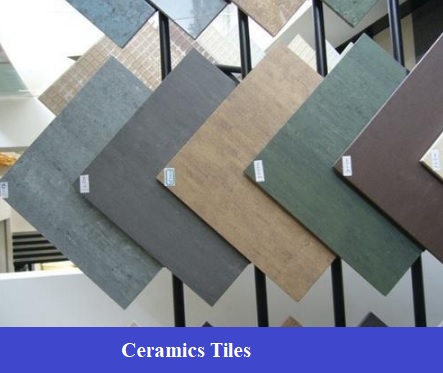Table of Contents
Introduction:
Ceramics tiles are a very popular material for floor and wall tiles. These types of tiles are used in homes, restaurants, retail stores, office space, etc. Ceramics tiles are available at a very cheap price compared to porcelain tiles and marble tiles.

What are Ceramics Tiles?
Ceramics tiles are a mixture of clay, sand, quartz, and water. Due to their low cost, ceramics tiles are widely used in the construction industry. They are the alternate options for porcelain tiles.
What are Glazed Ceramics Tiles?
Glazing is a concept in which coating a vitreous substance fused to a ceramic body through firing. Glazing is done to enhance more properties in ceramic tiles.
Glazed ceramics tiles are more decorative and available in different color combinations. Glazing is also used to waterproof ceramics tiles because conventional ceramics tiles are often subjected to moisture content.
Glazed ceramics tiles are more functional. They are available in different surface finishes. You can choose various textures in glazed ceramics tiles which are not available in traditional ceramics tiles.
Glazed ceramics tiles are slightly more costly compared to simple ceramics tiles.
Types of Ceramics Tiles:
There are two types of ceramics tiles:
- Traditional Ceramics Tiles.
- Glazed Ceramics Tiles
The main difference is that glazed ceramic tiles have the impervious layer or coating of a vitreous substance that has been fused to a pottery body through firing while unglazed ceramic tiles don’t have any additional coating.
Advantages of Ceramics Tiles:
- Ceramics tiles are the cheapest tiles available in the market.
- These tiles can withstand high temperatures.
- Acidic material does not affect ceramics tiles.
- Ceramics tiles are corrosion-resistant.
- Ceramic tile flooring is very easy to maintain.
Disadvantages of Ceramics Tiles:
- Ceramics tiles are brittle.
- Ceramics tiles are weak in tension and shearing.
